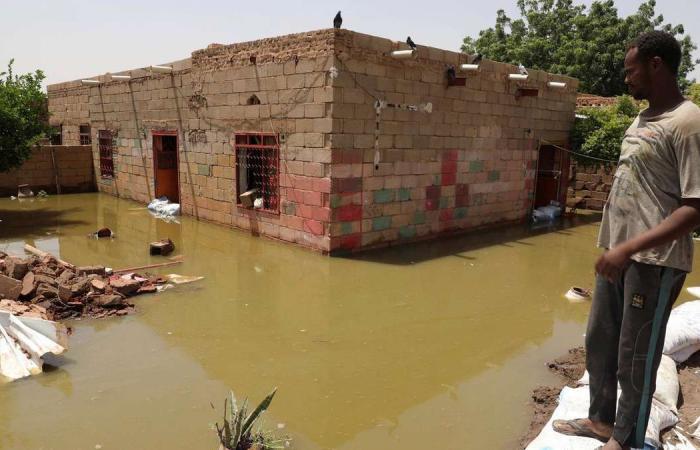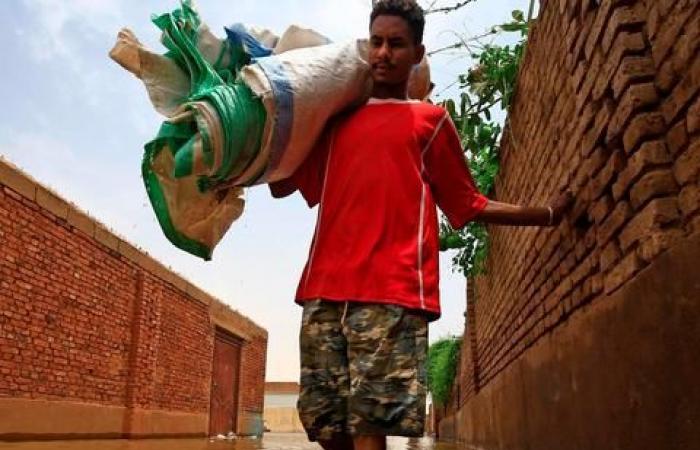Thank you for your reading and interest in the news Sudan floods highlight vulnerability to Ethiopia's giant Nile dam and now with details
Hind Al Soulia - Riyadh - Sudan has been hit by its worst flooding in decades, with heavier-than-usual rainfall causing the Blue and White Niles to breach their embankments in the capital Khartoum.
The flooding killed at least 100 people, affecting residential neighbourhoods, damaging homes and disrupting power and water supplies.
The rains, which began in late July, have steadily worsened across the country, hitting their peak last week. At the weekend, authorities declared the entire nation a natural disaster area, imposing a three-month state of emergency while thousands of volunteers joined civil defence personnel in rescue operations.
Authorities said that 50 people were also injured and 100,000 homes were damaged or destroyed across the country. As many as 500,000 people have been affected, as well as 43 schools and more than 2,000 health facilities.
The destruction is a reminder of the potential devastation Sudan could face if there was a structural breach in the massive hydroelectric dam being built by neighbouring Ethiopia.
Sudan has repeatedly demanded that experts from Khartoum and the Ethiopian capital Addis Ababa closely co-operate over the operation of the Grand Ethiopian Renaissance Dam, or GERD, which is just 19 kilometres away from its eastern border.
A Sudanese man stand amidst flood waters in Tuti island, where the Blue and White Nile merge in the Sudanese capital Khartoum. AFP
A man passes on the side of a flooded road in the town of Alkadro, about (20 km) north of the capital Khartoum, Sudan. AP Photo
A Sudanese man holds bags to build a barricade walk amidst flood waters in Tuti island, where the Blue and White Nile merge in the Sudanese capital Khartoum. AFP
Sudanese stand amidst flood waters in Tuti island, where the Blue and White Nile merge in the Sudanese capital Khartoum. AFP
A Sudanese resident catches a fish in floodwater in the capital Khartoum's southern neighbourhood of al-Kalakla. AFP
A Sudanese man build a barricade amidst flood waters in Tuti island, where the Blue and White Nile merge in the Sudanese capital Khartoum. AFP
Enshirah Sharaf (L), a Sudanese psychologist, speaks next to victims of recent flooding at an education centre hosting them on Tuti island, where the Blue and White Nile merge between the twin cities of the capital Khartoum and Omdurman. AFP
A man passes on the side of a flooded road in the town of Alkadro, about (20 km) north of the capital Khartoum, Sudan. AP Photo
A man walks beside a flooded road in the town of Shaqilab, about 15 miles (24 kilometers) southwest of the capital, Khartoum, Sudan. AP Photo
The Blue Nile, the river the GERD sits on, contributes more than 80 per cent of the water to the Nile after it and the White Nile meet near Khartoum. The Nile provides water to the deserts of northern Sudan and to Egypt, where it pours into the Mediterranean.
Egypt has managed to largely avoid flooding since it completed its own dam in the early 1970s.
Sudan, a nation of more 40 million people, is not new to flooding, but this year has been the worst since records began, with water at levels that have not been seen before.
Images shared online show residents and volunteers trying to salvage belongings, and others attempting to free themselves after being stuck in mud.
Camps for displaced people and field hospitals were set up at schools near ravaged areas.
The United Nations said that hundreds of drinking water sources have been contaminated, affecting access to clean water, a vital resource in fighting the coronavirus epidemic.
“The UN and humanitarian partners are supporting national response with emergency shelter and household supplies, together with water, sanitation and hygiene assistance, food and health services,” said the world body in a statement.
Updated: September 6, 2020 05:48 PM
These were the details of the news Sudan floods highlight vulnerability to Ethiopia's giant Nile dam for this day. We hope that we have succeeded by giving you the full details and information. To follow all our news, you can subscribe to the alerts system or to one of our different systems to provide you with all that is new.
It is also worth noting that the original news has been published and is available at The National and the editorial team at AlKhaleej Today has confirmed it and it has been modified, and it may have been completely transferred or quoted from it and you can read and follow this news from its main source.


